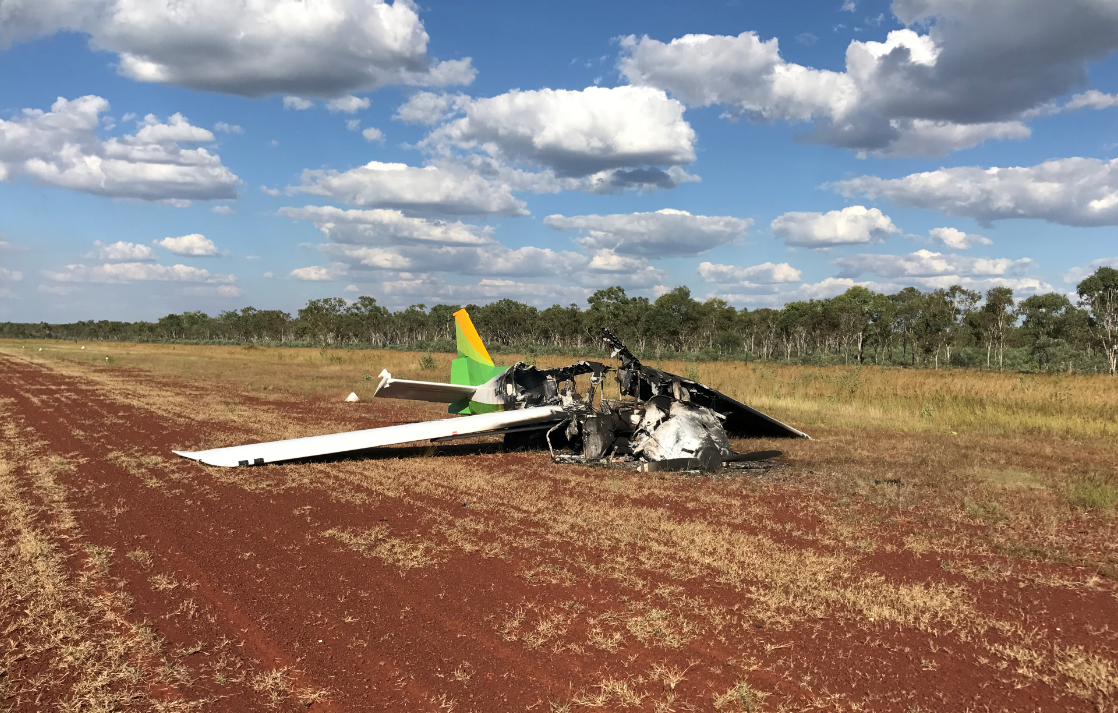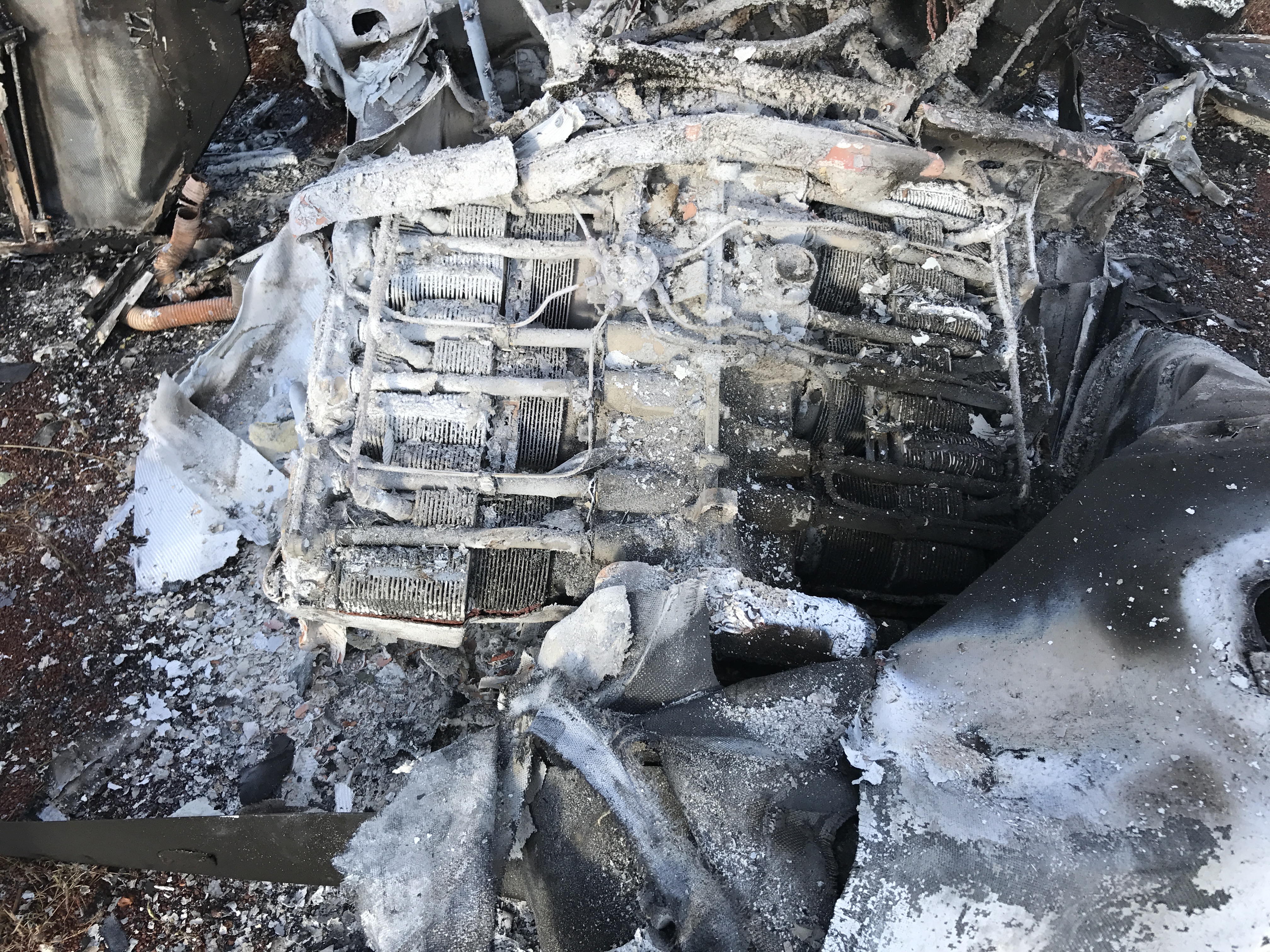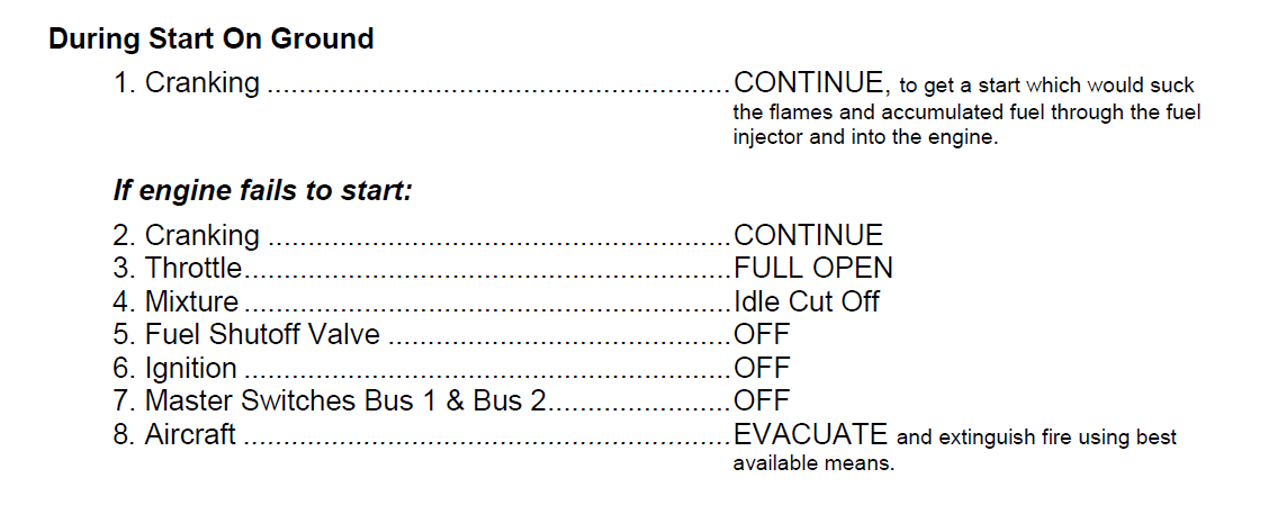What happened
On 23 March 2017, a Gippsland Aeronautics GA-8 aircraft, registered VH-AJZ, was being used to conduct incendiary bombing aerial work operations[1] in the Prince Regent River area of northern Western Australia (WA). On board were a pilot, a navigator seated in the co-pilot seat and a bombardier in the rear of the aircraft cabin.
While conducting the incendiary bombing operations, the bombardier advised the pilot that he was suffering from motion sickness. The pilot elected to land at Gibb River aircraft landing area (ALA), WA, to take a lunch break and provide the bombardier with time to recover from the motion sickness.
At about 1255 Western Standard Time (WST), the aircraft landed on runway 07 at Gibb River. During the landing roll, the engine failed. The aircraft had sufficient momentum to enable the pilot to turn the aircraft around on the runway and begin to taxi to the parking area at the western end of runway 07. Shortly after turning around, the aircraft came to rest on the runway. The pilot attempted to restart the engine, but the engine did not start. The pilot waited about 10–20 seconds before again attempting to restart the engine.
While attempting the second restart of the engine, the pilot heard a loud noise similar to that of a backfire. The navigator then observed flames and smoke coming from around the front of the engine and immediately notified the pilot. After being notified of the fire, the pilot immediately shut down the engine and switched off the aircraft electrical system.
As the pilot switched off the aircraft electrical system, the navigator located the aircraft fire extinguisher and evacuated from the aircraft through the co-pilot door. After evacuating from the aircraft, the navigator observed fire on the aircraft nose wheel. The navigator had difficulty preparing the fire extinguisher for use and was unable to discharge the fire extinguisher onto the fire.
While the navigator was attempting to extinguish the fire, the pilot exited the aircraft through the pilot door and assisted the bombardier to exit the aircraft. After assisting the bombardier, the pilot moved to the front of the aircraft to assist the navigator with the firefighting. The pilot was able to activate the fire extinguisher and extinguished the fire on the nose wheel. The pilot observed fire continuing to burn within the engine compartment. Due to the heat of the fire, the pilot was unable to access the engine compartment to extinguish this fire. The pilot determined that no more could be done to contain the fire, and therefore, the pilot, navigator and bombardier moved clear of the aircraft to a safe location as the fire continued.
The crew members were not injured. As a result of the fire, the aircraft was destroyed (Figure 1).
Figure 1: VH-AJZ wreckage

Source: Operator
Pilot comments
The pilot of the aircraft provided the following comments:
- The temperature at Gibb River at the time of the landing was about 33–34 °C.
- There were no abnormal engine indications prior to the engine failing.
- The engine failed in a manner similar to a normal engine shutdown. The pilot had not experienced an engine failure in that manner before.
- The electric fuel pump remained on after landing and throughout the attempted starts. During the attempted starts, the pilot ‘cracked’ the throttle and advanced the mixture lever while cranking the engine. Between the first and second start attempts, the mixture control was selected to idle cut-off.
- When assisting the bombardier to evacuate, one box of incendiary capsules was removed, however, three or four boxes remained in the aircraft.
Chief pilot comments
The operator’s chief pilot provided the following comments:
- Due to the significant fire and heat damage, the cause of the fire could not be determined (Figure 2).
- When taxiing in high ambient temperatures and at low power settings, fuel may vaporise within the mechanical engine fuel pump, and this can lead to the engine failing. When operated in these conditions, the aircraft should be taxied with the electric fuel pump on to prevent fuel vaporisation.
Figure 2: Fire damage to engine

Source: Operator
Engine fire during start emergency procedure
The GA-8 emergency procedures included the ‘engine fire during start emergency procedure.’ In case of an engine fire during start, the procedural steps to be followed are shown in Figure 3.
Figure 3: GA-8 fire during start on ground emergency procedure extract
Source: Mahindra Aerospace
After the fire was detected, the pilot shut down, rather than continued cranking the engine. After the engine was shut down, the fuel shutoff valve was not selected off.
Safety analysis
The extent of damage to the engine and aircraft prevented the reasons for the engine failure being determined.
The presence of fire on the nose wheel below the engine indicates that the fire was probably fed by a fluid. However, the extent of damage to the engine prevented the reason of the fire being determined.
After identifying the engine fire, the engine was shut down, and cranking was not continued in accordance with the emergency procedure. Cranking the engine may have extinguished the fire before it became unmanageable. After the engine was shut down, the fuel shutoff valve was not closed to provide a barrier between the fuel tanks and the engine. Not completing this step of the engine fire during start emergency procedure increased the likelihood of fire and allowed the fire to intensify.
Findings
These findings should not be read as apportioning blame or liability to any particular organisation or individual.
- The cause of the engine failure and fire could not be determined.
- After the fire was identified, two steps in the emergency procedure were omitted. This included not closing the fuel shutoff valve, which likely resulted in the fire not being extinguished and subsequently intensifying.
Safety Action
Whether or not the ATSB identifies safety issues in the course of an investigation, relevant organisations may proactively initiate safety action in order to reduce their safety risk. The ATSB has been advised of the following proactive safety action in response to this occurrence.
Aircraft operator
As a result of this occurrence, the aircraft operator has advised the ATSB that they are taking the following safety actions:
Retraining
- The pilot has completed retraining with an emphasis on fire procedures.
Safety message
This investigation highlights the importance of knowing and understanding flight manual normal and emergency procedures. In this accident, steps in the engine fire during start procedures were omitted. When facing a situation as serious as a fire, the published emergency procedures provide the foundation for emergency response management.
Aviation Short Investigations Bulletin - Issue 62
Purpose of safety investigationsThe objective of a safety investigation is to enhance transport safety. This is done through:
It is not a function of the ATSB to apportion blame or provide a means for determining liability. At the same time, an investigation report must include factual material of sufficient weight to support the analysis and findings. At all times the ATSB endeavours to balance the use of material that could imply adverse comment with the need to properly explain what happened, and why, in a fair and unbiased manner. The ATSB does not investigate for the purpose of taking administrative, regulatory or criminal action. TerminologyAn explanation of terminology used in ATSB investigation reports is available here. This includes terms such as occurrence, contributing factor, other factor that increased risk, and safety issue. Publishing informationReleased in accordance with section 25 of the Transport Safety Investigation Act 2003 Published by: Australian Transport Safety Bureau © Commonwealth of Australia 2017
Ownership of intellectual property rights in this publication Unless otherwise noted, copyright (and any other intellectual property rights, if any) in this report publication is owned by the Commonwealth of Australia. Creative Commons licence With the exception of the Coat of Arms, ATSB logo, and photos and graphics in which a third party holds copyright, this publication is licensed under a Creative Commons Attribution 3.0 Australia licence. Creative Commons Attribution 3.0 Australia Licence is a standard form licence agreement that allows you to copy, distribute, transmit and adapt this publication provided that you attribute the work. The ATSB’s preference is that you attribute this publication (and any material sourced from it) using the following wording: Source: Australian Transport Safety Bureau Copyright in material obtained from other agencies, private individuals or organisations, belongs to those agencies, individuals or organisations. Where you wish to use their material, you will need to contact them directly. |
__________



